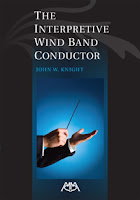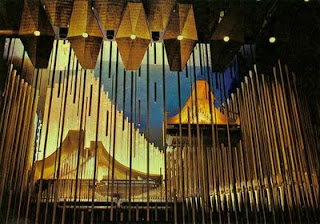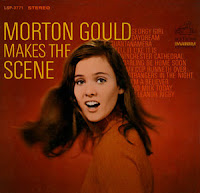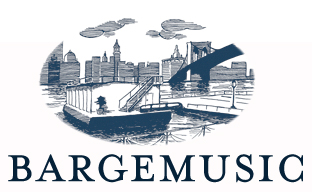Here's but a short list of musical happenings culled from the New York
Times. I have to quit noticing the enrichment opportunities available elsewhere. If I lived there, I couldn't afford to go anyway. But one can certainly dream...
Classical Music/Opera Listings for August 5-11
Published: August 4, 2011
 |
| It's true: Brunhilde does Merman! |
★ Glimmerglass Festival (Friday through Tuesday, and Thursday):
Maestro says: Debbie Voigt trades in her horns and breastplates and takes on one of Ethel Merman's signature roles in Francesca Zambello's new staging of Irving Berlin's
Annie Get Your Gun. The
Times notes that there is no amplification: as if either Ms. Merman or Ms. Voigt
ever needed such a thing.
The festival also includes "a gripping double bill of two compelling one-act operas:
A Blizzard on Marblehead Neck by the composer Jeanine Tesori and the playwright Tony Kushner, about a tumultuous night in the lives of Eugene O’Neill and his wife, Carlotta, and
Later the Same Evening by the composer John Musto and the librettist Mark Campbell, which takes its characters and its inspiration from five Edward Hopper paintings."
"The director Anne Bogart gives Bizet’s
Carmen a stark contemporary look in a production that features a ravishingly lovely and vocally gifted young mezzo-soprano, Ginger Costa-Jackson, in the title role. In Cherubini’s
Medea, the standouts are the impressive young Italian conductor Daniele Rustioni and the soprano Alexandra Deshorties, who gives a fearless performance of the daunting title role. The season also includes a special program, “Voigt Lessons,” Ms. Voigt’s personal, entertaining and poignant one-woman recital in which she tells of her life through songs and confessional stories.
Carmen: Friday and Thursday at 7:30 p.m. and Monday at 1:30 p.m.; Annie Get Your Gun: Saturday and Tuesday at 1:30 p.m.;
Medea: Saturday at 8 p.m.; one-act double bill: Sunday at 1:30 p.m.; “Voigt Lessons”: Sunday at 4 p.m. Glimmerglass Festival, 7300 State Highway 80, eight miles north of Cooperstown, N.Y., (607) 547-2255,
glimmerglass.org; $46 to $126; $10 on Sunday only." (Anthony Tommasini)
★ ‘Die Liebe der Danae’ (Friday and Sunday) The Bard SummerScape festival makes a strong case for this long-neglected Strauss
opera. Kevin Newbury’s production, set in a stylized contemporary New York, is inventive and emotionally nuanced; Leon Botstein leads the American Symphony Orchestra clearly through the dazzling score. The trio of leads sings well and acts with commitment. The bittersweet opera — a mash-up of Greek myths that speaks to love’s triumph over the abrasive influence of money — could not feel more relevant. Go see it. Friday at 7 p.m. and Sunday at 3 p.m., the Richard B. Fisher Center for Performing Arts at Bard College, Annandale-on-Hudson, N.Y., (845) 758-7900,
fishercenter.bard.edu/summerscape; $30 to $90. (Zachary Woolfe)
Opera on Tap (Friday) It is Serge Gainsbourg season in New York. A biopic of the French chanteur opens at Film Forum on Aug. 31, and on Friday the intrepid and fun Opera on Tap group presents an evening inspired by Gainsbourg’s song “Chatterton,” an uplifting evening of texts and music about people who have been committed to mental institutions or have committed suicide (uplifting? you're kidding, right?) At 8 p.m., Barbès, 376 Ninth Street, at Sixth Avenue, Park Slope, Brooklyn, (347) 422-0248,
barbesbrooklyn.com; suggested $10 donation. (Woolfe)
Classical Music
Bargemusic (Friday through Sunday, and Thursday) This week the barge features the pianist Sophia Agranovich on Friday with an all-Liszt program celebrating that composer’s bicentennial (
Maestro says: Snooze Sounds a little heavy-handed to me). Saturday brings the Trio con Brio Copenhagen with a program of Beethoven, Schubert and Bent Sorensen; on Sunday the Amernet String Quartet plays Haydn, Janacek and Schubert. On Thursday the refined cellist Eugene Osadchy performs the first three of Bach’s immortal suites for solo cello. (There is also a weekly, hourlong free concert every Saturday at 3 p.m.) Friday, Saturday and Thursday at 8 p.m. and Sunday at 3 p.m., Bargemusic, Fulton Ferry Landing, next to the Brooklyn Bridge, Brooklyn, (718) 624-2083,
bargemusic.org; $35, $30 for 65+; $15 for students. (Woolfe) (
Maestro says: BOOOORING. Let's have something writing since the members of the audience were born! OK, maybe the Sorensen is....Is his first name really "Bent?")
Bridgehampton Chamber Music Festival (Saturday and Sunday) Saturday’s program, “From Bohemia With Love,” features music by Dvorak, Martinu and Poulenc. (
Maestro says: Since when is France part of Bohemia, Francis?) On Sunday Schubert is paired with Chausson and Paul Moravec’s Wind Quintet. At 6:30 p.m., Bridgehampton Presbyterian Church, 2429 Montauk Highway, Bridgehampton, N.Y., (631) 537-6368,
bcmf.org; $30 on Saturday and $40 on Sunday. (Vivien Schweitzer)
★ Marlboro Music (Friday through Sunday) This is the 60th anniversary of Marlboro Music, the prestigious chamber music festival in a bucolic Vermont town. The programs for the weekend concerts are subject to change because the resident musicians don’t perform them until they feel ready. The two programs for the festival’s fourth weekend have been released and look typically enticing. On Friday night the musicians present Marlboro’s annual benefit for town organizations in the college’s dining hall, with works by Schubert and Thomas Adès. Saturday night’s program in the concert shed offers a Fauré piano trio; Mozart’s Serenade in C minor for winds; and Brahms’s sublime Quintet for Clarinet and Strings. Sunday afternoon’s program includes Copland’s Sextet and Schubert’s Octet. Friday and Saturday at 8:30 p.m. and Sunday at 2:30 p.m., Marlboro Music, 2472 South Road, Marlboro College, Vt., (802) 254-2394,
marlboromusic.org; $15 to $35, or $5 for outdoor canopy-area seats. (Tommasini)
Maestro says: Enticing? As much as I love
all this stuff, it's mostly old hat.
★ Maverick Concerts (Saturday and Sunday) An endearing hallmark of this festival is that it is held in an open barn, which allows the sounds of nature to mingle with those of the musicians — in this case, the eloquent pianist Jon Nakamatsu, who will give a Sunday program at 4 p.m. that includes music by Rameau, Brahms and Liszt. The Young People’s Concert is Saturday at 11 a.m. Maverick Concerts, 120 Maverick Road, Woodstock, N.Y., (800) 595-4849,
maverickconcerts.org; Saturday, free for children, $5 for adults; Sunday, $25 to $40, or $5 for students. (Allan Kozinn)
Maestro says: What's the "Maverick" connection? Brett? Cigarettes? It's certainly not the programming....
★ Mostly Mozart Festival (Friday through Thursday) The schedule is busy this weekend and next week at this annual summer festival. On Friday and Saturday nights the violinist Joshua Bell plays Bruch’s Violin Concerto No. 1 with the Mostly Mozart Festival Orchestra, conducted by Pablo Heras-Casado, on a program also offering Bach and Mozart works. (
Maestro: Bach, Mozart and Bruch: that's daring...) The exciting Takacs Quartet plays works by Shubert (sic....oops!) and Beethoven at a Saturday “Little Night Music” concert, the popular series of late-evening, informal concerts at the Kaplan Penthouse, and then plays a program with the pianist Andreas Haefliger at Alice Tully Hall on Sunday afternoon. Then beginning on Monday (
Maestro says: Now things get interesting!) the brilliant International Contemporary Ensemble begins a weeklong residency, playing four concerts, including an enticing all-Stravinsky program on Monday night with the brilliant pianist Peter Serkin as soloist. They also play two “Little Night Music” programs, which tend to sell out quickly. Mostly Mozart Orchestra with Joshua Bell: Friday and Saturday at 8 p.m., Avery Fisher Hall; Takacs Quartet: Saturday at 10:30 p.m. at the Kaplan Penthouse and Sunday at 5 p.m. at Alice Tully Hall; International Contemporary Ensemble: Monday and Thursday at 7:30 p.m., Alice Tully Hall, and Monday and Thursday at 10:30 p.m., Kaplan Penthouse; (212) 721-6500,
mostlymozart.org; $45 to $90. (Tommasini)
Music Mountain (Saturday and Sunday) This longstanding chamber music festival continues on Saturday with the Amernet String Quartet, which will be joined by the cellist Yehuda Hanani for an all-Schubert program. The event includes a postconcert discussion about Schubert’s string quartets. On Sunday the Colorado String Quartet will play Haydn and Mendelssohn; the pianist Melvin Chen joins for Dvorak’s Piano Quintet in A. At 6:30 p.m. on Saturday and 3 p.m. on Sunday, Gordon Hall, Music Mountain, 225 Music Mountain Road, Falls Village, Conn., (860) 824-7126,
musicmountain.org; $30; $27 in advance; free for under 18 when accompanied by ticket holder. (Schweitzer)
Maestro says: OK, this isn't adventuresome either, but I like the fact that kids can get in free.
 |
| Trying to imagine Stoky w/acrobats... |
Philadelphia Orchestra (Friday through Sunday, and Tuesday through Thursday) Each summer the Philadelphia Orchestra decamps to Saratoga, N.Y., and its festivities there continue this weekend with a blend of acrobatics and music. The programs on Friday and Saturday feature classical masterpieces set to acts by jugglers, contortionists and trapeze artists (
Selling out? Anything to make a buck, right?). On Wednesday the Philadelphia musicians, conducted by Giancarlo Guerrero, are joined by the saxophonist Branford Marsalis for works by Debussy, Bizet, Ravel and Milhaud. On Thursday Mr. Guerrero leads Prokofiev’s Symphony No. 5 and Rachmaninoff’s Piano Concerto No. 2, with the pianist Gabriela Montero as soloist. On Tuesday Ms. Montero will demonstrate her considerable gifts as an improviser (she comes up with tunes suggested by the audience) and will join orchestra members for music by Martinu and Dvorak (
That one could be cool.) On Sunday afternoon the Tokyo String Quartet plays Haydn, Ives (
OMG! Ives! Of course, none of the American ensembles can be this daring) and Schumann. At 8 p.m. except Sunday at 2:15 p.m., Saratoga Performing Arts Center, 108 Avenue of the Pines, Saratoga Springs, N.Y., (518) 587-3330,
spac.org; Friday, Saturday, Wednesday and Thursday, $20 to $72.50; Sunday and Tuesday, $36.50 to $41.50. (Schweitzer)
Skaneateles Festival (Wednesday and Thursday) For more than 30 years there has been chamber music at this festival in Skaneateles, N.Y., near Syracuse in the idyllic Finger Lakes region. The Chiara String Quartet is featured in two concerts next week, joined by the cellist David Ying, the pianist Elinor Freer and the clarinetist Alan Kay. Wednesday’s program features works by Mozart, Stacy Garrop and Brahms, as well as pieces written by community composers using the computer composition program Hyperscore. On Thursday is a program of Poulenc, Haydn and Messiaen. At 8 p.m., First Presbyterian Church, 97 East Genesee Street, Skaneateles, N.Y., (315) 685-7418,
skanfest.org; $10 on Wednesday, $18 to $24 on Thursday. (Woolfe)
This one's got me excited, and check out the prices! Cheaper than a movie (east coast prices anyway) on Wednesday!
 |
| Tanglewood: If the music bores you, keep drinking.... |
★ Tanglewood (Friday through Thursday) The weekend at the Boston Symphony’s summer home in the Berkshires begins with a promising collaboration between the conductor Raphael Frühbeck de Burgos and the sizzling young pianist Yuja Wang on Rachmaninoff’s “Rhapsody on a Theme of Paganini.” Also on the program: Beethoven’s Eighth Symphony and Strauss’s “Rosenkavalier” Suite.
(As if we haven't already heard that stuff) On Saturday, Sean Newhouse conducts the orchestra in Pierre Jalbert’s “Music of Air and Fire,” the Rachmaninoff Second Symphony and, with the violinist Sarah Chang, the Mendelssohn Violin Concerto (
Gotta give them their Rach and Mendelssohn "dessert" after hearing a new piece). On Sunday afternoon Lionel Bringuier conducts Smetana’s “Moldau,” (
Come one guys....by now everyone knows that it's called Vltava!!!) Tchaikovsky’s Fifth Symphony and, with Emanuel Ax as the soloist, Mozart’s Piano Concerto No. 22. The weekend also includes the final installments of the Tanglewood Music Center’s Festival of Contemporary Music (
of course we can't talk about what they might be performing...), and the coming week features a performance by the Boston Symphony Chamber Players, on Tuesday, and the mezzo-soprano Stephanie Blythe (and friends), on Wednesday. Friday and Saturday at 8:30 p.m. and Sunday at 2:30 p.m. at the Koussevitzky Music Shed. The Festival of Contemporary Music runs through Sunday at Seiji Ozawa Hall, various times. The Boston Symphony Chamber Players and Stephanie Blythe perform at 8 p.m. at Seiji Ozawa Hall. Tanglewood, Lenox, Mass., (888) 266-1200,
bso.org; $9 to $91 on Friday; $19 to $91 on Saturday and Sunday; $20 to $102 on Sunday; $11 for Festival of Contemporary Music concerts; $18 to $52 on Tuesday and Wednesday. (Kozinn)
OK, so maybe I'm not missing that many things that might challenge my ear and sensibilities. Still, I'll bet that they play all this old stuff well.














































